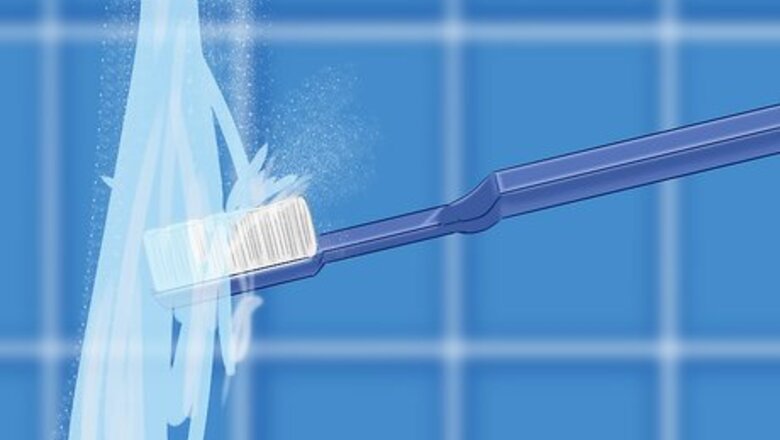
views
Storing Your Toothbrush Daily
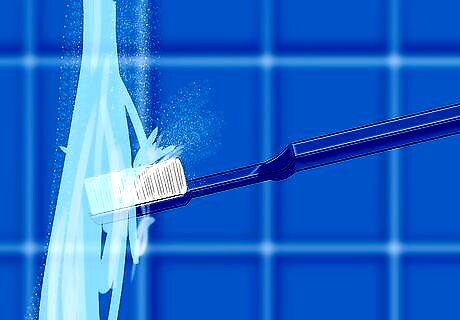
Rinse the head of your toothbrush to remove toothpaste and debris. Before and after brushing your teeth, you should always thoroughly rinse out the bristles of your toothbrush. Hold it under hot tap water to kill germs and rub the bristles with your thumb. It's important to clean your toothbrush before brushing to get rid of any airborne bacteria or collected dust particles.
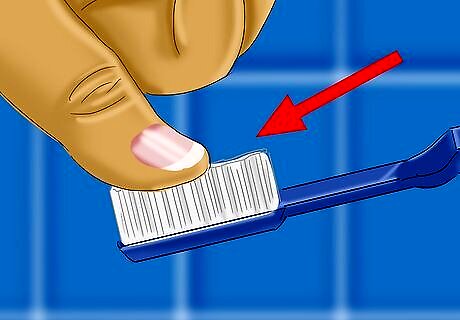
Tap your brush to shake off any excess water. Use the edge of the sink to tap the handle of your brush. This will help your brush air-dry faster and prevent bacteria from growing.
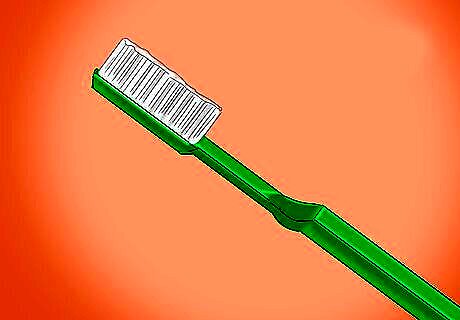
Store your brush upright in a cup or holder. Always store the brush with the bristles up and handle down. This way, the head will be open to the air and any excess water will drain down away from the bristles, rather than collect and breed bacteria.
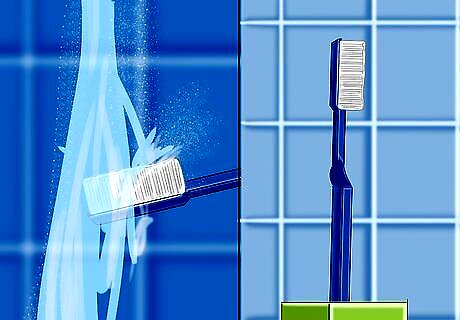
Keep the cup or holder out in the open. To let your brush completely air-dry, leave it in a lit, well-ventilated area such as a counter or shelf rather than in a drawer or cabinet. This will help prevent bacteria from growing and help it dry out more quickly.
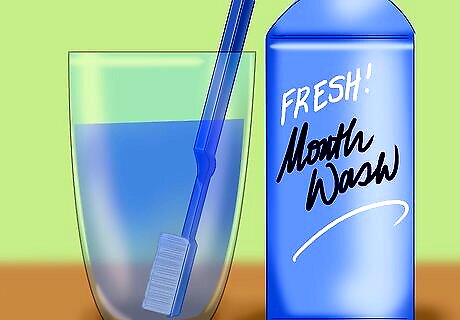
Don't let other toothbrushes touch yours. The bacteria on toothbrushes can cross-contaminate if they touch, so keep toothbrushes separate--even among family members. Use separate cups or a holder with multiple spaces for different toothbrushes.
Keeping Your Toothbrush Clean
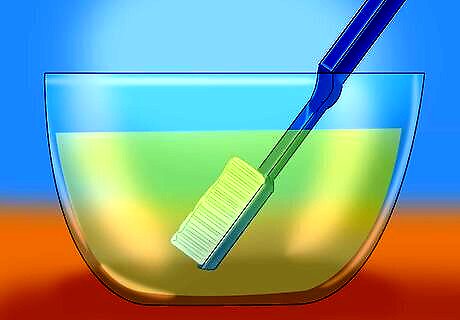
Deep-clean your brush once a week for extra cleanliness. Although sanitizing soaks are not proven to kill all bacteria, using a toothbrush sanitizer once a week keeps your brush feeling fresh. Let the head of your toothbrush soak in a cup of antibacterial solution for 10 minutes, then rinse it clean. You can use a mouthwash as an antibacterial soak as long as it contains alcohol, or you can make your own with 1 part bleach and 2 parts water. A cup of either hydrogen peroxide or vinegar will also work as a sanitizing solution.
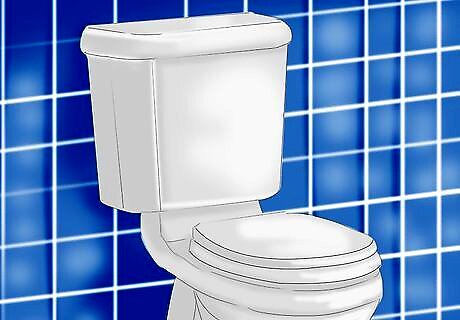
Store your toothbrush away from the sink and toilet. Avoid splashes of dirty or chemical-contaminated water by keeping your toothbrush a safe distance away. To prevent a spray of fecal matter when you flush, you should keep your toothbrush at least 2–3 feet (0.61–0.91 m) from the toilet and always flush with the toilet seat down.
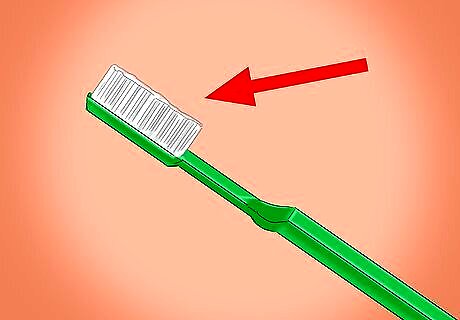
Replace your toothbrush every 3-6 months. After several months, bacteria builds up and the bristles become frayed and damaged. With disposable toothbrushes, just throw your old one away and purchase a new one. For electric toothbrushes, just replace the head every 3 months.
Storing Your Toothbrush While Traveling
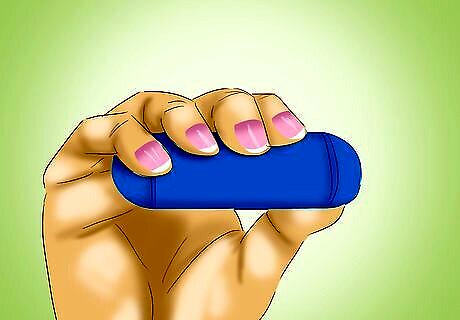
Don't use a toothbrush cover. This may keep your toothbrush from coming into contact with other toothbrushes, but covers can cause a different problem. They create a moist, dark environment around your toothbrush head for bacteria to breed. It's better to leave your toothbrush uncovered so it's exposed to light and air.
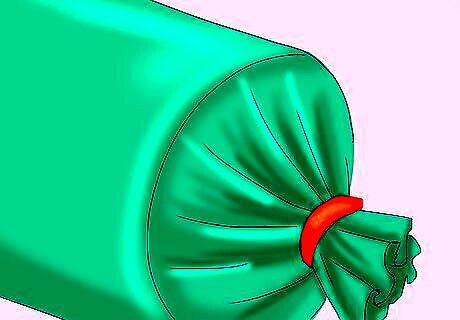
Don't keep your toothbrush inside a bag for too long while you're traveling. Use a ventilated travel bag and keep it sitting out as long as possible. If you're staying at a hotel, set your toothbrush in a cup to let it air-dry rather than immediately tuck it back in your bag.
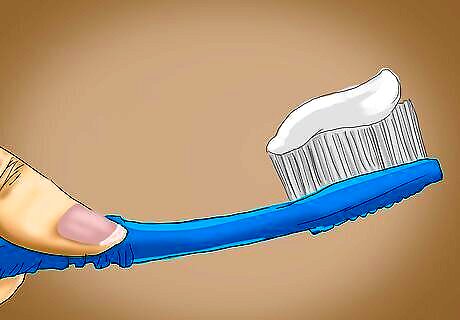
Wash your toothbrush travel case frequently. To prevent bacteria growth and water buildup, make sure to give your travel case a good washing once a week. Use hot water to scrub out the inside of the case, then let it dry completely before using again.












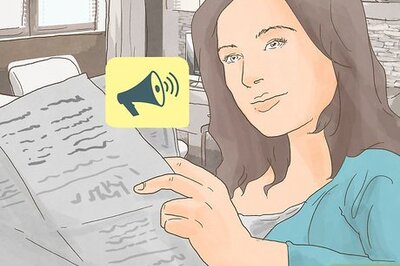







Comments
0 comment